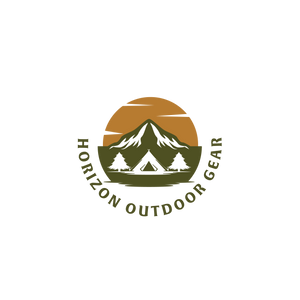There's something primal and mesmerizing about sitting around a campfire, its flickering flames casting an enchanting glow on the faces of eager storytellers. To embark on this age-old tradition during your camping adventures, you must first master the art of safely and quickly lighting a camping fire. In this comprehensive guide, we'll explore the intricacies of selecting the right wood, understanding chips, tinder, and kindling, various ways to lay wood, and the essential rules for extinguishing and cleaning up a camping fire.
Choosing the Right Wood: Types of Trees for Your Campfire
The success of your campfire also depends on the type of wood you choose. Not all wood is created equal when it comes to burning efficiently and producing minimal smoke. Here are some common types of trees that make excellent choices for campfires:
-
Hardwoods: Hardwoods are dense and burn long and hot, making them ideal for sustaining a campfire. Common hardwoods for campfires include:
- Oak: Oak is known for its slow, steady burn and substantial heat output.
- Maple: Maple wood burns evenly and produces a pleasant aroma.
- Hickory: Hickory is excellent for both cooking and campfires, with a strong, smoky flavor.
-
Softwoods: Softwoods ignite quickly, making them suitable for kindling and initial fire-starting. However, they burn faster and may produce more creosote, a flammable substance that can build up in chimneys and stovepipes. Common softwoods for campfires include:
- Pine: Pine is readily available and easy to ignite, making it great for kindling. It does burn quickly, so it's best used in combination with hardwoods for a longer-lasting fire.
- Cedar: Cedar is aromatic and burns well, making it a favorite for campfires. Its pleasant scent adds to the outdoor ambiance.
-
Fruit Trees: If available, fruitwood trees like apple and cherry can be a delightful choice for campfires. They impart a subtle fruity aroma to the air and are often used for smoking food in outdoor cooking.
-
Avoid Poisonous Trees: It's crucial to avoid using wood from trees that are toxic or produce harmful fumes when burned. Examples include poison oak, poison ivy, and oleander. Burning these woods can release dangerous toxins into the air.
Remember that for a sustainable and responsible campfire, it's best to use fallen branches, deadwood, or wood sourced from designated firewood areas. Avoid cutting live trees or damaging the environment to gather firewood.
Using a wood log carrier makes transporting firewood more efficient, tidy, and convenient, while also reducing strain on your body and protecting your clothing.
There are three main types of wood you should consider:
-
Tinder: Tinder refers to the driest and most easily ignited material. Examples include dry leaves, grass, birch bark, and paper. Ensure your tinder is as dry as possible to kick-start the fire.
-
Kindling: Kindling consists of small sticks, twigs, or branches that ignite quickly and sustain the initial flames. Look for dry, thumb-sized twigs to serve as your kindling.
-
Firewood: Firewood comprises larger logs and branches that sustain the fire once it's established. Choose seasoned, dry firewood to ensure a steady, long-lasting fire.
Methods for Laying Wood
Now, let's delve into various methods for arranging your wood to create a successful campfire:
-
Teepee: Arrange the kindling and tinder in a cone shape, leaning against each other. As the fire ignites, it will rise upwards, consuming the wood effectively.
-
Log Cabin: Place two larger pieces of firewood parallel to each other, leaving space in between for tinder and kindling. Stack smaller pieces on top, creating a cabin-like structure. This arrangement provides good airflow for combustion.
-
Lean-To: Position a larger log as a support, then place kindling and tinder against it, forming a lean-to structure. As the fire burns, it will spread along the support log.
-
Star: Lay pieces of firewood like spokes in a wheel, leaving space in the center for tinder and kindling. As the fire burns inward, it consumes the logs one by one.
Lighting the Campfire
Now that your wood is properly arranged, follow these steps to light your campfire safely and efficiently:
-
Place the tinder in the center of your chosen wood arrangement.
-
Use a fire starter, waterproof matches, or a lighter to ignite the tinder. Best choice is Fire Lite™ Fuel Free Lighter
-
Gradually add kindling to the flames, ensuring proper airflow to encourage combustion.
-
Once the kindling is burning steadily, add firewood in a way that allows oxygen to flow through the fire, sustaining the flames.
-
Keep a watchful eye on the fire, adding more firewood as needed to maintain the desired size and heat.
Extinguishing and Cleaning Up
Equally important as lighting a campfire is knowing how to extinguish and clean up after it. Follow these guidelines:
-
Let the fire burn down to a bed of hot coals and embers, allowing the flames to naturally subside.
-
Use a long stick or a campfire tool to spread out the coals, ensuring they're evenly distributed.
-
Slowly pour water over the coals, stirring them to douse any remaining embers thoroughly.
-
Use a shovel or a fire pit tool to mix the coals with dirt or sand, further smothering the fire.
-
Continue adding water and stirring until there's no longer any visible smoke or steam.
-
Finally, use a fine-mesh strainer to sift through the ashes and remove any remaining debris. Scatter the cool ashes over a large area, away from the campsite.
By mastering the art of safely and quickly lighting a camping fire, understanding the different types of wood, arranging them effectively, and following proper extinguishing and cleanup procedures, you'll not only enjoy the warmth and ambiance of a campfire but also ensure the safety of the environment and fellow campers.


